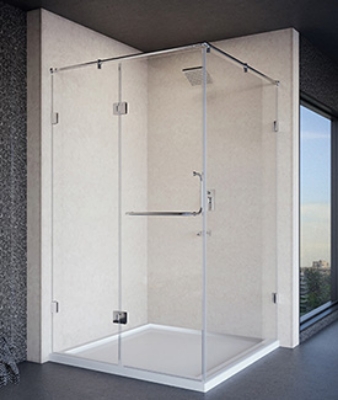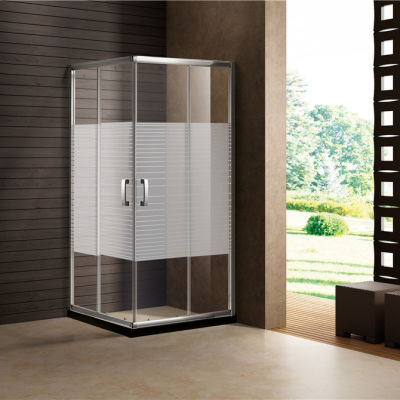Shower Installation Demystified - A Complete Guide For New Units
Shower Installation Demystified - A Complete Guide For New Units
Blog Article
Just about everyone may have their private conception with regards to How to Install a Direct-to-Stud Shower Enclosure.

A successful shower installation requires careful preparation as well as a lot of work. In most cases, you will certainly need to do 3 sorts of tasks: framing wall surfaces, mounting the plumbing, as well as finishing wall surfaces.
Different Sorts Of Shower Units
Most Usual Errors
Prep work.
Firstly, you have to select the kind of shower that you wish to install. It is necessary to establish whether the selected shower is capable of coping with particular systems as well as can regulate a risk-free level of water via the boiler. The majority of shower systems nowadays are designed to be adaptable to different water stress (such as kept hot water and cool mains).
It is additionally essential to take into account the water pressure and the preparation of the piping and drainage for the shower.
Approach.
Depending on the sort of shower you wish to set up, the shower head must either be suited order to avoid its contact with the water in the bath listed below or the base tray, or it should have a check shutoff.
Before beginning, it is advisable to note the positions of the shower head as well as control, and also to intend the pipe-work involved. In addition, the drainage system to eliminate the waste water will require to be planned. Both settings of the cable path and also the shower switch will certainly also require to be considered if an immediate or electrical shower unit is being set up.
Make use of the instruction overview supplied with the shower device to fit the shower control.Before fitting the pipes that will provide the water to the shower system, it is important to cut off the water supply. In order to secure the pipelines, they should be provided a water-proof covering as well as also fitted with isolating shutoffs. The pipelines can then be hidden right into the wall surface and also plastered over to neaten the overall appearance.
Fit the base tray, shower head, and also installations.
Connect the main shower control to the pipes that will certainly be providing the water (This might call for a women screw string adapter).
Reconnect the water and also test the pipes for any leaks, as some may require firm.
If you are installing an electrical shower, remember to switch off the electricity supply before making any type of electrical connections. Once these connections have actually been made (there need to be advice within the user's manual), the power supply can be switched over back on.
Adjusting Water Pressure to Suit Your Shower.
The cold water reservoir can be raised to a higher height (occasionally just 150mm (6inches)) by installation a strong wooden support beneath it - perhaps made up of struts as well as blockboards. If you choose this option, the main and also distribution pipes will certainly additionally need to be increased to satisfy the new height of the storage tank.
Conversely, a booster pump (a single pump or a dual/twin pump) can be fitted. Whichever type is selected, it should be connected into the power supply in order to operate.
Piping and also Drain.
It is best to utilize 15mm diameter supply pipelines, as well as make the runs to the shower as brief and straight as feasible so regarding maintain optimal stress and also reduce warm loss. Additionally, by reducing using elbow joints for pipeline edges, you can decrease the resistance in the circulation of the supply of water. You can achieve this by flexing the pipes rather.
How Do You Install a Shower? Follow This Guide
Installing a Shower at a Glance
Tools & Materials: Level, electric drill, caulk, hole saw, cedar shims, shower unit Step 1: Drill pilot holes Step 2: Prep fixture holes Step 3: Move unit into place Step 4: Caulk corners and base Step 5: Attach door Step 6: Install shower pan Whenever plumbing is involved in a DIY project, people worry about what might go wrong. The truth is that installing a shower isn’t that complicated, and you can save a lot of money by doing it yourself. You shouldn’t need to make any alterations to your plumbing to complete the job, and most of the tools you need will be provided in your new shower kit.
Can I Install a Shower Myself?
Even if you’ve never installed a shower before, you’ll find this to be a project that is perfectly suited for DIYers with a moderate level of experience. Whether you're doing a bathtub conversion or installing a new stall, most of what you need comes in shower kits that you can purchase from a hardware store. The first thing you need to do is determine what type of shower stall you want.
Single-panel stalls are the easiest to install because they come preassembled. All you need to do is put them in place. Multi-panel showers require a few additional steps, but you’ve got more control over the appearance of your unit. Multi-panel units are also much easier to handle if you’re going to do the installation without any help.
Be sure to take all appropriate safety precautions, such as wearing eye protection and gloves. When you’re removing or installing a shower unit, you might kick up debris that could hurt your eyes. You’ll also need to work with equipment that will get extremely hot, so be sure to have safety gloves handy.
Tools and Materials
2- to 4-foot level Electric drill with a 1/8-inch drill bit Caulk 2-inch hole saw Cedar shims The unit itself Before You Begin: Prep the Space
It’s highly important to measure your space accurately before putting the stall in. Measuring from the floor upward and from each corner outward will ensure you’ve got the right measurements. What you’re looking for is where the plumbing apparatuses are going to come through the stall. Transfer these measurements over to the back of your unit by drawing the locations of these holes using a pencil or marker.
Pull out your old shower and make sure to scrape off all the old caulking. Be thorough because you want to work with smooth surfaces for the best installation. Once you’ve pulled out your existing shower, you need to make sure that the floor is clean and dry. The best way to clean debris is with a shop vacuum, as it’ll soak up water and dirt together.
If you’re experiencing any plumbing issues, such as low water pressure, this is a perfect opportunity to solve them. Make sure that the pipes themselves are not in need of patching and clean your showerhead. When you turn the water back on after your project, check the pipes for signs of wear or disrepair. Anything beyond minor repairs should be handled by a plumber, and this is the best time to bring in a professional.
If the floor has any moisture at all, don’t proceed until it’s completely dry. The last thing you need is for the floor to rot or invite mold and mildew into your base. Once everything is dry, apply waterproof wallboard to the walls. This can be attached with screws or nails, then sealed with caulk so that water doesn’t seep into any crevices.

Do you really like reading about How to Install a Shower Enclosure ? Try leaving a remark directly below. We would be pleased to see your opinions about this posting. We are looking forward that you come back again in the near future. Make sure you take the time to promote this blog posting if you enjoyed reading it. Thanks for going through it.
Visit Homepage
Report this page